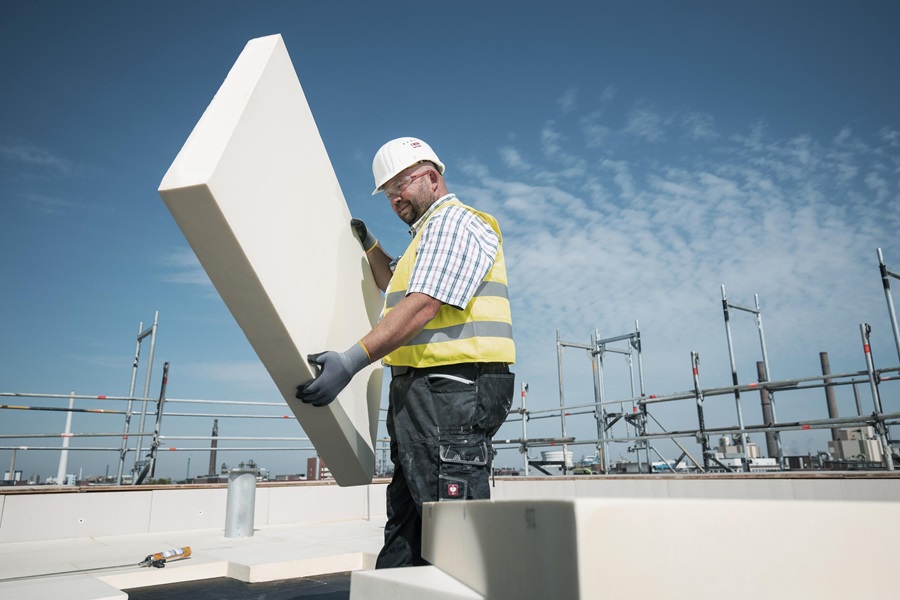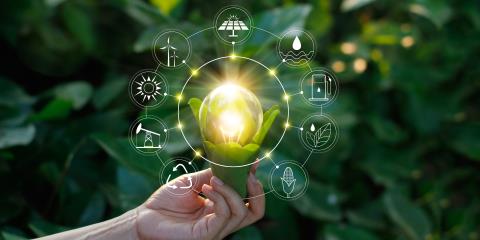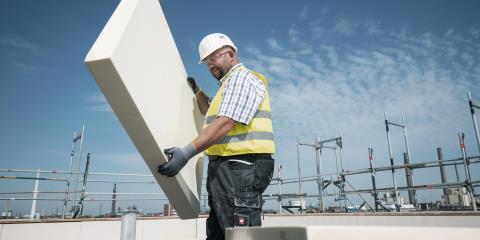
Transforming construction with low carbon material solutions
More sustainable, climate-neutral1 materials, available today
Our climate-neutral1 MDI for polyurethane insulation represents a breakthrough in more sustainable building materials. By utilizing bio-waste as raw material and attributed via the mass balance approach, this innovative solution enhances energy efficiency and supports sustainable building certifications from production to application.
Makrolon® RE polycarbonate resins showcase our commitment to circularity. We integrate alternative raw materials – circular feedstock inputs such as plant residues and used cooking oils – into our chemical feedstock using an ISCC Plus certified mass balance approach. These resins offer high performance and design flexibility while significantly reducing carbon footprints in construction applications.
Paving the way to a circular economy
Through our ongoing efforts to reduce emissions and utilize renewable energy sources, we are progressively minimizing our reliance on fossil fuels across our operations. This approach not only lowers environmental impacts but also supports our goal of achieving full circularity in construction material supply chains.
1 Climate neutrality is the result of an internal assessment of a partial product life cycle from raw material extraction (cradle) to the factory gate (of Covestro), also known as cradle-to-gate assessment. The methodology of our LCA with external audit and certification is based on the ISO 14040 and 14044 standards. The calculation takes into account biogenic carbon sequestration based on preliminary data from the supply chain. No compensation measures were applied.
Curious? Check out the FAQs!
What is the current alternative feedstock you could apply to make PU foam more sustainable?
Today, it is already possible to produce PUR/PIR foams using bio or bio-waste resources allocated via mass balance.
How do these feedstocks contribute to the sustainability of PU foam products?
These feedstocks substitute the use of fossil-based resources, reducing significantly the embodied carbon from the PUR/PIR foams.
How do these feedstocks contribute to the sustainability of PCS products?
By replacing fossil raw materials with the renewable feedstock, our Makrolon® RE resin can reach a sustainable share of up to 89%, certified by ISCC+.
What makes PU foam for insulation more efficient than other insulation materials?
PU foams have an outstanding lambda value, meaning we can insulate with much less material, saving resources and space. Additionally to that, they are very durable and offer an excellent compressive strength.

Is the performance from the Polycarbonates resin changed when using alternative feedstocks?
No, Makrolon® RE resins deliver exactly the same technical performance as fossil-based polycarbonates, but with a significant lower CO₂ -footprint1.
Can PCS materials be used in combination with other building materials?
Is the performance from the PU foams changed when using alternative feedstocks?
No, the mass balance approach allows to add renewable raw materials to the PU foams, without changing the overall performance from them. It offers the same usual superior performance from the PU foams, with much less CO2 emissions1.











